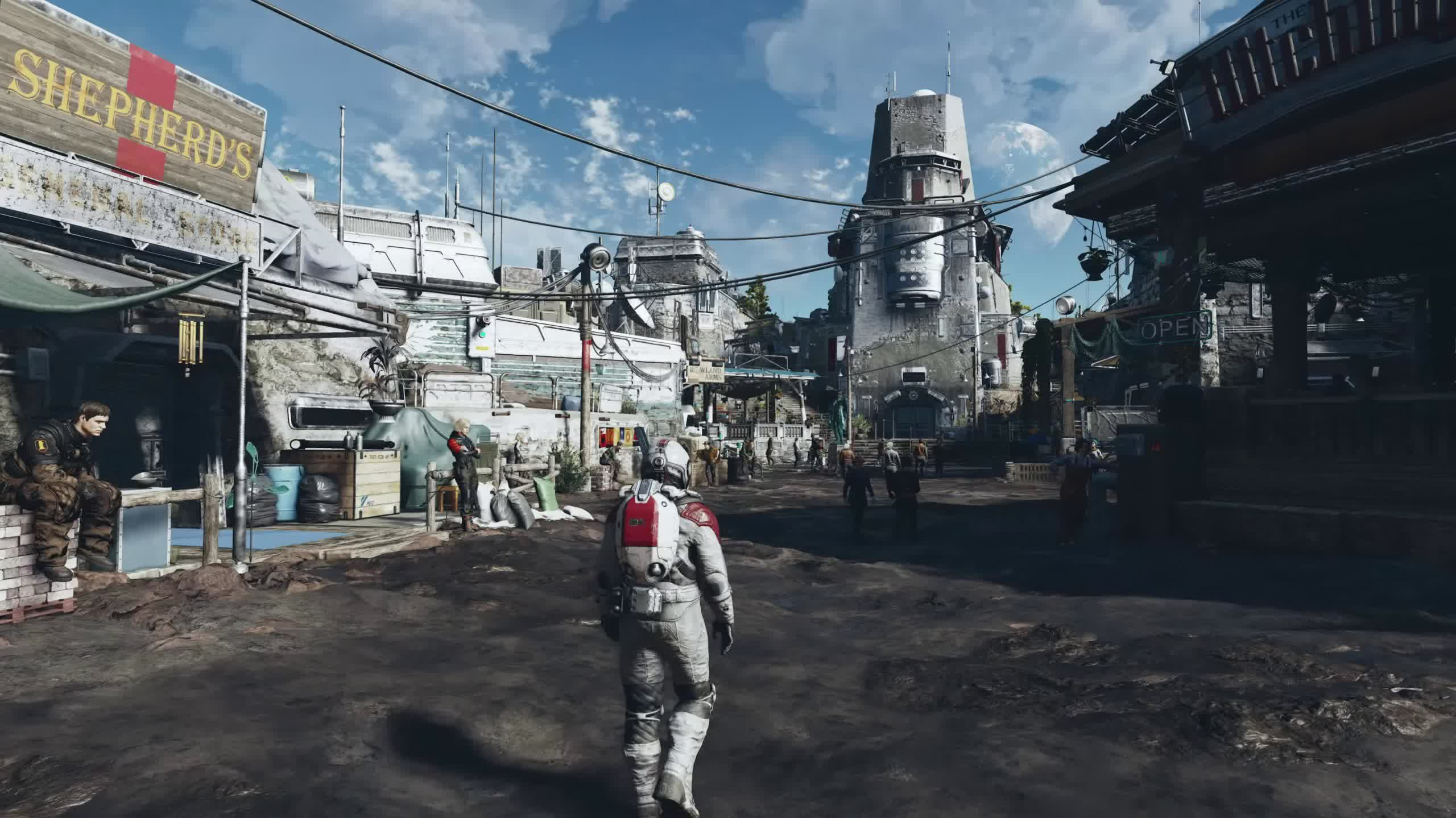A hot potato: Much of the controversy surrounding AMD's collaboration with Bethesda on Starfield has been about the game's upscaling solutions. However, post-launch performance analysis of the PC version reveals an unusual comparison between AMD Radeon and Nvidia GeForce GPUs, especially when compared to other recent titles. Although this appears suspicious, there are several potential factors that could explain the discrepancy.
A performance evaluation of Starfield by Digital Foundry shows that Nvidia graphics cards and Intel processors are punching well below their weight. TechSpot's own GPU performance analysis paints a similarly puzzling picture in what's been one of 2023's most highly anticipated PC releases.
Starfield is notoriously demanding. To maintain 60 frames per second in 1440p at medium graphics settings, high-end GPUs like the Radeon RX 6800 or the GeForce RTX 3090 are needed. Yet, Nvidia cards seem to have an added challenge.
A telling comparison is between AMD's RX 6800 XT and Nvidia's RTX 3080. These GPUs are typically neck-and-neck in other recent, computation-heavy games like The Last of Us Part 1 and Call of Duty: Warzone 2.0. But in Starfield, AMD's GPU surpasses its Nvidia rival by over 20 percent, varying with resolution and settings. It even outpaces the once-dominant RTX 3090. Remarkably, Starfield is one of the few games where the RX 7900 XTX outperforms the RTX 4090, even though AMD designed it to rival the RTX 4080.
Similarly concerning is Digital Foundry's discovery that enabling hyperthreading on Intel CPUs degrades Starfield's performance. Meanwhile, Ryzen CPUs see more even saturation across all of their threads, particularly compared to most other high-profile titles that tend to lean on just a few threads.
The optics of the situation might cast further doubt on AMD's collaboration with Bethesda for the game. Controversy surrounding the partnership erupted when Starfield, the latest AMD-sponsored title, exclusively featured FSR as its upscaling option. This decision raised eyebrows, especially since modders and developers have confirmed that integrating DLSS and XeSS isn't problematic for major developers who've already adapted to FSR 2.
While it might be tempting to suspect foul play from AMD or potential oversight from Bethesda regarding competing hardware, it's essential to note that both Nvidia and Intel are responsible for optimizing their graphics products for major releases. AMD's August drivers enhanced Starfield's performance by 16 percent, whereas Intel had to roll out multiple emergency patches to ensure its Arc Alchemist GPUs could handle the game. Although Nvidia's late August drivers referenced Starfield, the company likely requires another update to fully address the issues. Moreover, it makes sense for Bethesda to focus mainly on AMD chips to optimize performance in the Xbox version.
